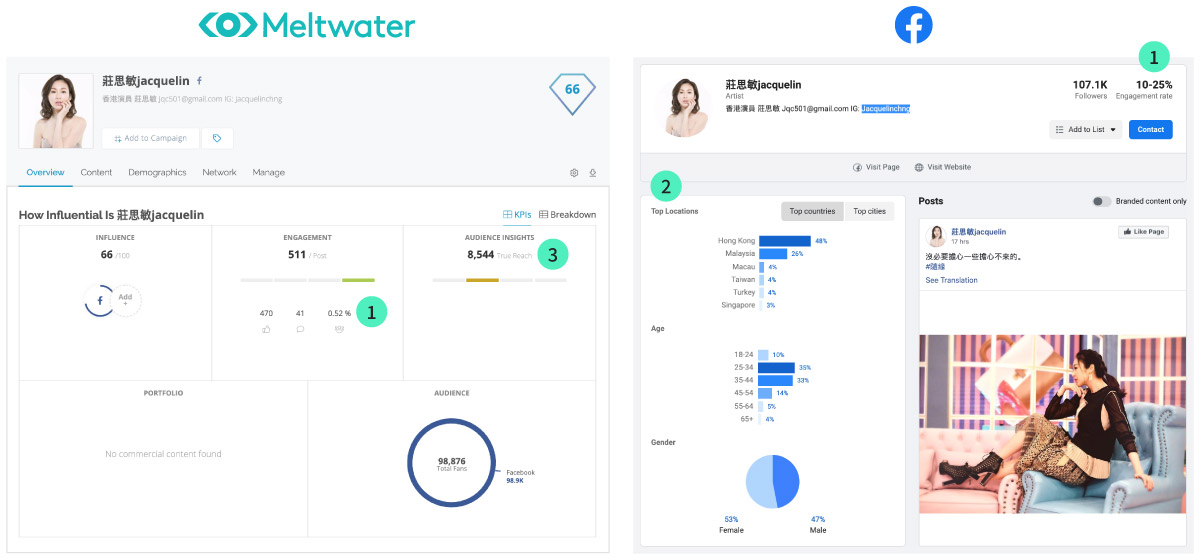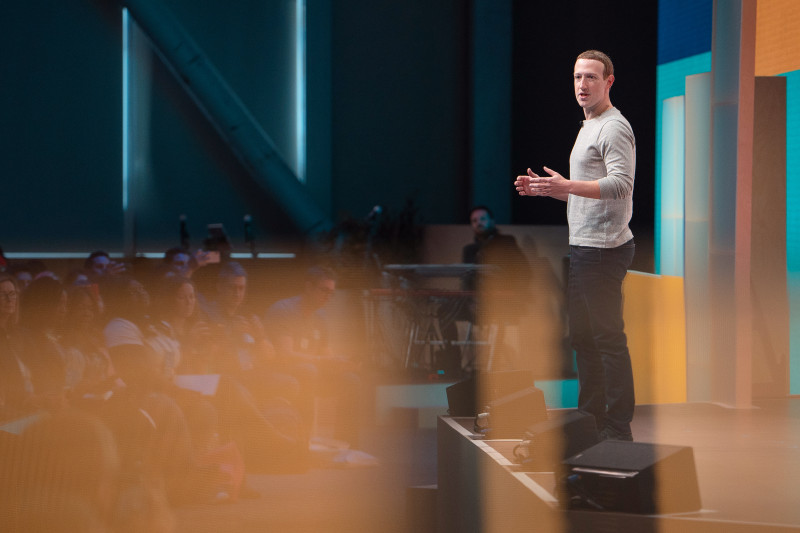Covering the expansion of Brand Collabs Manager for marketers, here is our second article of this series written by Albin Lix, Xavier Schillinger, and Winnie Chan. Enjoy! In 2018, Facebook launched its influencer management tool, Brand Collabs Manager, and to this day it is still limited in terms of accessibility. Fast forward to December 2019 when the Brand Collabs Manager announced that it is set to expand its service to Instagram Creators in 2020. Upon reading the announcement article, a few things stuck out to us such as “Brand Collabs Manager – a marketplace tool” or “we will be investing even more resources in 2020 to help them [the creators] build their businesses on Instagram”. The strong choice of words by Zuck’s team caught our attention. This is why we would like to put in perspective how Facebook will change the influencer marketing world in 2020, leveraging its Brand Collabs Manager platform. The 3 items highlighted on the images above are good starting points to discuss the differences and the weaknesses of Brand Collabs Manager for marketers. Let’s dig right in!
The 3 items highlighted on the images above are good starting points to discuss the differences and the weaknesses of Brand Collabs Manager for marketers. Let’s dig right in!
Data & User Interface of Brand Collabs Manager for Marketers
The Brand Collabs Manager for marketers platform is quite intuitive to use, and while it does contain some useful data, it could be more precise. Here is the list of its main functions:- Search function by name, keyword, or hashtag
- Filters by location, gender, age, interests
- Listing function to regroup & save identified Influencers
- Briefing tool to help streamline the whole process
- Publishing & partnership to keep track of all collaborations
 The 3 items highlighted on the images above are good starting points to discuss the differences and the weaknesses of Brand Collabs Manager for marketers. Let’s dig right in!
The 3 items highlighted on the images above are good starting points to discuss the differences and the weaknesses of Brand Collabs Manager for marketers. Let’s dig right in!- As you can see, both platforms do indicate a different engagement rate. While we could assume that Facebook has more accurate data, we do see Meltwater’s being more trustworthy. Facebook gives a very wide range and it is quite likely that it takes into consideration all kinds of clicks and video views. For us, “quality engagement” rate should instead be measured based on social interactions. On this note, Meltwater measures using likes, comments, and shares. Also, it is a stretch for a marketer to be satisfied with a range that could potentially more than double up or down the results. We need to be more precise for diligent planning, selection, and execution.
- The demographics data on Brand Collabs Manager is very useful for a marketer, which is not accessible via the Facebook API connection for Meltwater. However, Instagram’s demographic data is available, meaning that Brand Collabs Manager would be a great supplement to Meltwater for Facebook Influencer selection. The only flaw we can point to is the database size which is much smaller than what Meltwater offers since “Content Creators” must register directly into it whereas Meltwater already has access to all public profiles.
- Here is an interesting data point provided by Meltwater’s algorithm yet missing on Facebook’s side: True Reach. While we know that posts do not reach the entire followers/fan base, it is important for marketers to analyze this data. True Reach can help us judge the impact an Influencer has on his/her audience, as well as giving us hard figures to include in our marketing KPIs, and ultimately compare apples-to-apples against other marketing actions. We know that this data exists in Facebook’s dataset but for now, it is only available for the Page owners/admins. But will it become available? We hope so!
An all-round platform in the making
Facebook’s promise in “making it easy for brands to find and approach creators for branded content opportunities” leads one to wonder if this is the real added value of the Brand Collabs Manager for marketers. While it does have this “ease” aspect to it due to the number of Influencers registered on the platform, there is also a lack of targeted key data that is still not available to us. The big picture of Facebook building a complete platform that can potentially go further than its competitors is clear. If Facebook does open the platform and pulls better data, you could potentially take this entire journey on Brand Collabs Manager:- Identify with native Facebook data for any Influencer
- Leverage inspirational branded content from Creators
- Brief the Influencers
- Approve the content before publishing
- Engage new audiences from social media interactions and drive traffic to brand website
- Track engagement, views or clicks to efficiently enrich your existing advertising capability
- Expand your audience by leveraging the Lookalike function
- Repeat and re-target engaged audience to drive conversion
- Analyze the entire campaign
- Pay the Influencers
The Influencer Marketing Expert Point Of View, by Winnie Chan
This is an exciting launch from Facebook. With extended benefits like leveraging branded content, approving content and retargeting engaged audiences, marketers can now develop an eco-system that creates synergy between other aspects in digital marketing such as advertising and social listening. With Facebook consistently updating Brand Collabs Manager for a better experience, I definitely see the potential and value of integrating it into our future campaigns. At Digital Business Lab, we highly value authentic content and storytelling. For a lot of campaigns, we identify and select influencers based on their unique story. From screening, storyboards, co-production to launch, a numerous amount of creative and production efforts are injected throughout the campaign. The only question now is, will Brand Collabs Manager be able to undertake Influencer campaigns with such a high level of complexity?Learn more about Brand Collabs Manager or influencer campaigns in Asia




